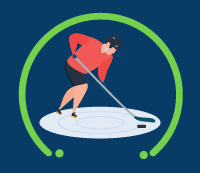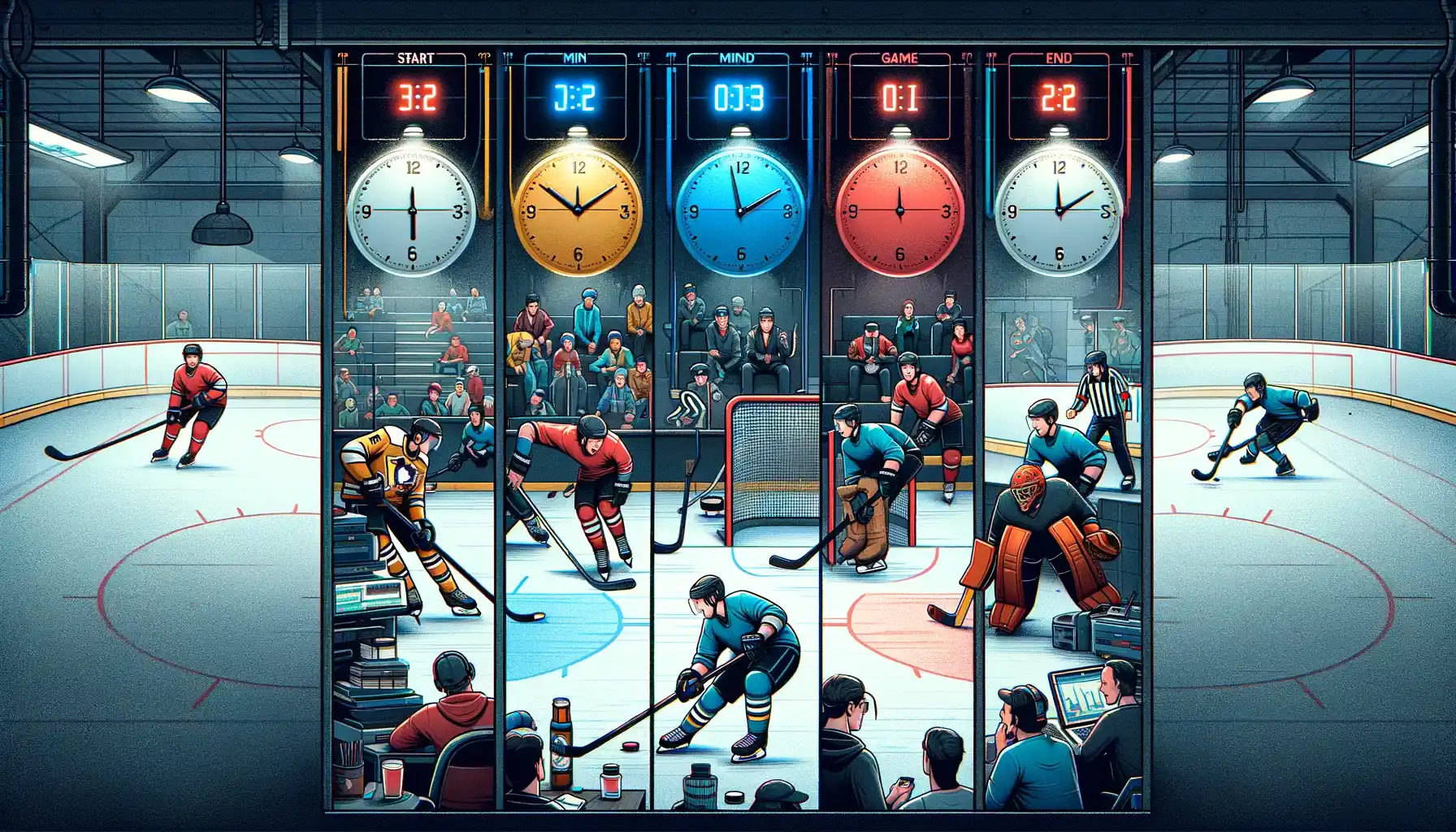What Is a Power Play in Hockey?
A power play in ice hockey occurs when one team gains a temporary numerical advantage due to an opponent’s penalty. This creates a high-stakes situation where offensive teams can press harder and defensive teams must survive with fewer skaters — usually four or even three against five.
This rule-based imbalance is unique to hockey. In other major sports like basketball or football, penalties result in possessions or yardage, but never fewer players. Hockey turns a simple rule infraction into a tactical opportunity — a chess match on ice, where puck movement, positioning, and quick decision-making are tested under pressure.
What Triggers a Power Play?
Power plays are triggered by penalties — infractions like tripping, slashing, or high-sticking. These are classified into several types based on severity and impact:
To better understand how different penalties lead to power plays, here’s a detailed breakdown:
| Penalty Type | Duration | Power Play Impact |
|---|---|---|
| Minor Penalty | 2 minutes | Ends if the advantaged team scores |
| Double Minor | 4 minutes | Treated as two back-to-back minors; scoring in the first two minutes ends only half |
| Major Penalty | 5 minutes | Continues for full duration, even if a goal is scored |
| Penalty Shot | One play | No time-based power play; direct 1-on-1 scoring chance |
| Game Misconduct | Game duration | Player ejected; no advantage unless another penalty is combined |
These time-based infractions are tracked in a player’s Penalties in Minutes (PIM), a key stat reflecting both discipline and physical playstyle.
The Penalty Box and Goalie-Specific Rules
When penalized, players must serve time in the penalty box, temporarily reducing their team’s on-ice strength. If a goalie is penalized, a teammate serves the time on their behalf — preserving the goalie’s crucial role. This nuance underscores the tactical complexity of power play situations and bench decisions.
Gain a comprehensive understanding of game infractions and their impact on the play. Discover the intricacies of hockey penalties and explore how Penalties in Minutes (PIM) influence team strategies and power play opportunities.
Why Power Plays Matter?
Power plays are not just rule-driven moments — they’re critical scoring windows. In the current 2024–2025 NHL season:
-
Winnipeg Jets lead the league with a 29.44% power play efficiency — scoring nearly 3 times for every 10 opportunities (63 goals in 214 attempts).
-
Vegas and New Jersey aren’t far behind, also converting at elite rates above 28%.
-
Individual stars like Jake Guentzel (17 PPG) and Brayden Point (16 PPG) are capitalizing on the man advantage with sniper-like precision.
A power play done right can flip the script in tight games — turning penalty kills into game-winners and keeping opponents on their heels.
Power Play Strategies and Tactics
Common Power Play Formations
-
Umbrella: Three players at the top, ideal for point shots and one-timers.
-
Overload: Stacks one side of the ice, creating short passing plays down low.
-
1-3-1: Balanced setup with a net-front presence, used for quick cross-slot passes and slot shots.
Top teams often rotate between these in real time to keep defenders off balance.
Key Roles and Movement
-
Point Player: Orchestrates play from the blue line with vision and quick decisions.
-
Net-Front Player: Screens the goalie and looks for deflections.
-
Wingers: Shift to create lanes and capitalize on gaps.
Skating, spacing, and constant rotation are vital — players like Draisaitl and Laine excel by finding quiet ice near the net.
Puck Control and Shot Strategy
-
Move the puck quickly and avoid over-handling.
-
Use hard, flat passes to pull defenders out of position.
-
Shoot through traffic — screens and rebounds create chaos and goals.
Guentzel’s league-leading 17 power play goals this season are proof: fast puck movement + net-front pressure = results.
Enhance your power play skills with strategic insights and physical training. Dive into our guides for mastering hockey passing strategies, a key component of successful power plays, and boost your on-ice agility with effective ice hockey skating drills to navigate the rink more efficiently during critical game moments.
Power Play Rules and Regulations
Understanding the rules behind a power play reveals just how strategic these moments are. From how penalties are timed to exceptions during overtime, every detail can impact the game’s outcome — especially when teams like Winnipeg (29.44% PP%) are capitalizing at elite levels.
A thorough understanding of the rules is vital for effective power plays, overall game strategy, and grasping the flow of game time. Deepen your knowledge of the game with our comprehensive guide on ice hockey rules, including those governing power plays, how many periods in hockey, and the typical length of a hockey game.
Icing Rules: The Shorthanded Advantage
Generally, icing occurs when a team clears the puck across both the center red line and the opposing goal line without it being touched, resulting in a stoppage. But during a power play, the shorthanded team is allowed to ice the puck without penalty. This exception helps them reset defensively and run down the clock — a key tactic for penalty kills.
How Penalties Affect Play
-
Minor Penalties (2 mins): If the team on the power play scores, the penalized player returns early.
-
Double Minor (4 mins): Scoring in the first half ends only the first 2-minute segment.
-
Major Penalties (5 mins): The full penalty is served regardless of how many goals are scored.
-
Game Misconducts: No direct power play unless a minor or major is assessed along with it.
-
Goalie Penalties: A teammate serves the time while the goalie remains on the ice.
Offside Still Applies
Despite the man advantage, standard offside rules remain active. The puck must cross the offensive blue line before any attacking player.
Overtime and Penalty Dynamics
In regular season NHL overtime, teams play 3-on-3. If a penalty is called, the non-penalized team gains a 4-on-3 advantage — a high-leverage situation that significantly changes spacing and pace. Teams must quickly switch from wide-open 3-on-3 play to tight, structured setups with clear shooting lanes.
To excel in power plays and overall gameplay, it’s vital to grasp the fundamentals and finer nuances of the sport. Enhance your hockey acumen with our essential ice hockey tips, covering strategies and best practices.
Complex Penalty Scenarios
When multiple penalties overlap, officials enforce re-entry based on penalty timing. These sequences test a team’s discipline, clock awareness, and ability to adapt to sudden shifts in numbers — especially during high-stakes moments.
Power Play Rules in Action
Smart use of these rules directly influences success. In 2024–2025, top teams like Vegas (28.80%) and Detroit (27.27%) maximize every advantage — combining quick puck recovery after icing, dynamic re-entry tactics, and disciplined zone setups.
Frequenlty Asked Questions on Hockey Power Play
What is a power play in hockey?
A power play occurs when one team gains a player advantage due to an opponent’s penalty. It creates a prime opportunity to score by overwhelming the shorthanded defense.
What causes a power play?
Power plays are triggered by rule infractions — such as tripping, slashing, or high-sticking — that result in one or more players being sent to the penalty box.
How long does a power play last?
-
Minor penalty: 2 minutes
-
Double minor: 4 minutes (treated as two consecutive 2-minute penalties)
-
Major penalty: 5 minutes (served in full, even if a goal is scored)
Does a power play end if a goal is scored?
Yes — but only for minor penalties. The power play ends immediately after a goal. Major penalties continue for the full 5 minutes, regardless of goals scored.
What is a 5-on-3 power play?
This is when the penalized team has two players in the box, giving the opposing team a two-player advantage — one of the most dangerous scoring scenarios in hockey.
What happens during a power play?
The team with the advantage uses structured formations, quick puck movement, and net-front presence to create scoring chances while the shorthanded team focuses on clearing the puck and killing time.
Final Thoughts: Where Games Are Won
Power plays are more than just penalties served — they are strategic inflection points. They test a team’s discipline, execution, and ability to adapt in real time.
In the 2024–2025 NHL season, we’re seeing just how critical power plays are: teams like Winnipeg and Vegas are converting at elite rates above 28%, gaining key leads and controlling momentum. Meanwhile, top scorers like Jake Guentzel are making the most of every man-advantage shift.
Whether you’re a fan, player, or coach, understanding the rules, formations, and flow of a power play unlocks a deeper appreciation for hockey’s most tactical moments — where the slightest edge becomes the game changer.




